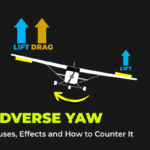When you look closely at many airplanes, especially older ones, you might notice a black nose tip. While it may seem like a simple design choice, the black nose on airplanes actually had a functional purpose.
At the front of most aircraft is a weather radar. This system helps pilots detect storms and avoid bad weather. The radar is placed inside the nose of the airplane, which is known as the radome, a combination of the words radar and dome. This part protects the radar while still letting radio waves pass through.
Unlike most of the aircraft, the radome cannot be made of metal. Metal blocks radar signals. So engineers used fiberglass, which allows the radar to function properly. But fiberglass is more vulnerable to damage from cold temperatures, high-speed winds, and debris at high altitudes.
To protect the radome and the radar inside, many planes were equipped with a rubber cap over the nose. This cap was black and helped shield the equipment from extreme weather. That’s why many older airplanes had a black nose.
Thanks to modern materials and improved radar technology, planes today no longer need this rubber cap. However, some airlines still choose to paint the nose of their aircraft black. This gives the plane a retro look and honors the history of aviation design.
So, the black nose on airplanes is more than just a design feature, it’s a reminder of how engineers protected key technology in earlier aircraft generations.



